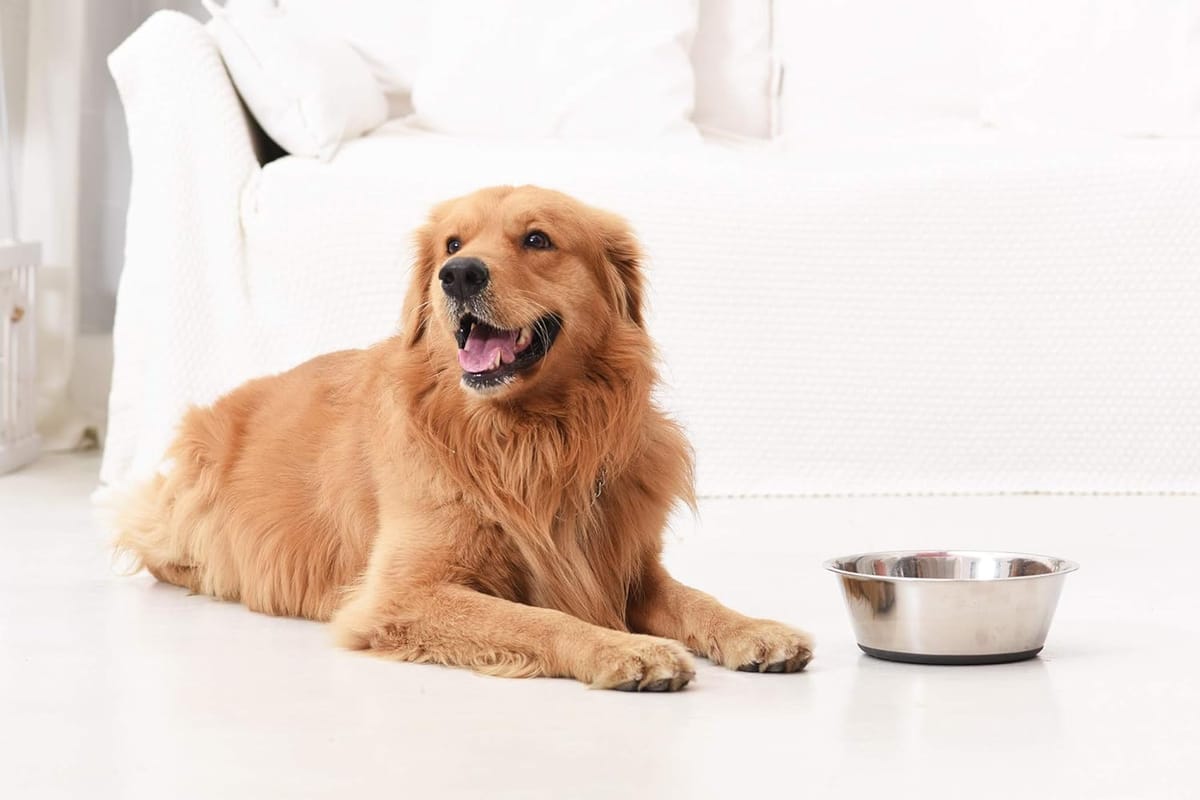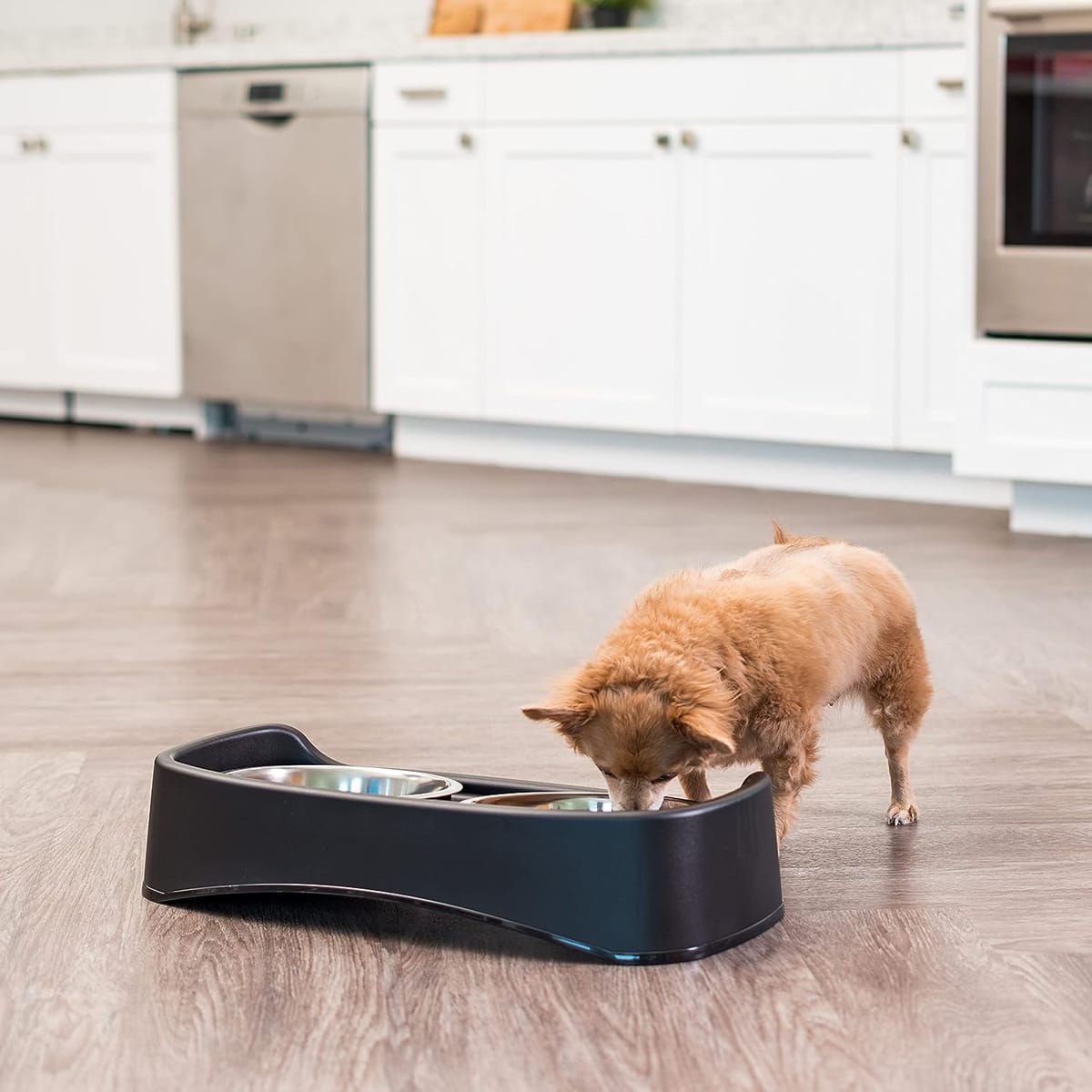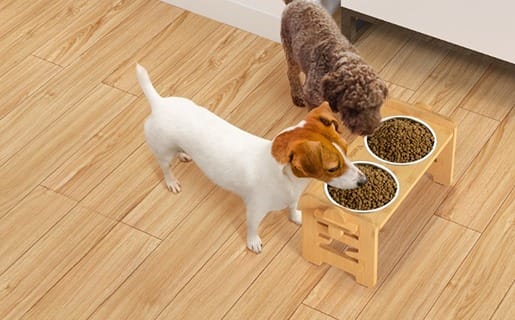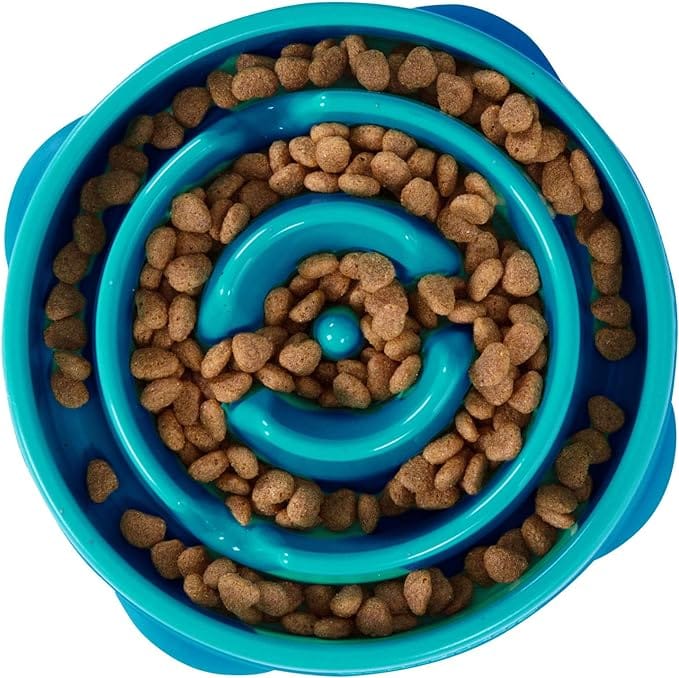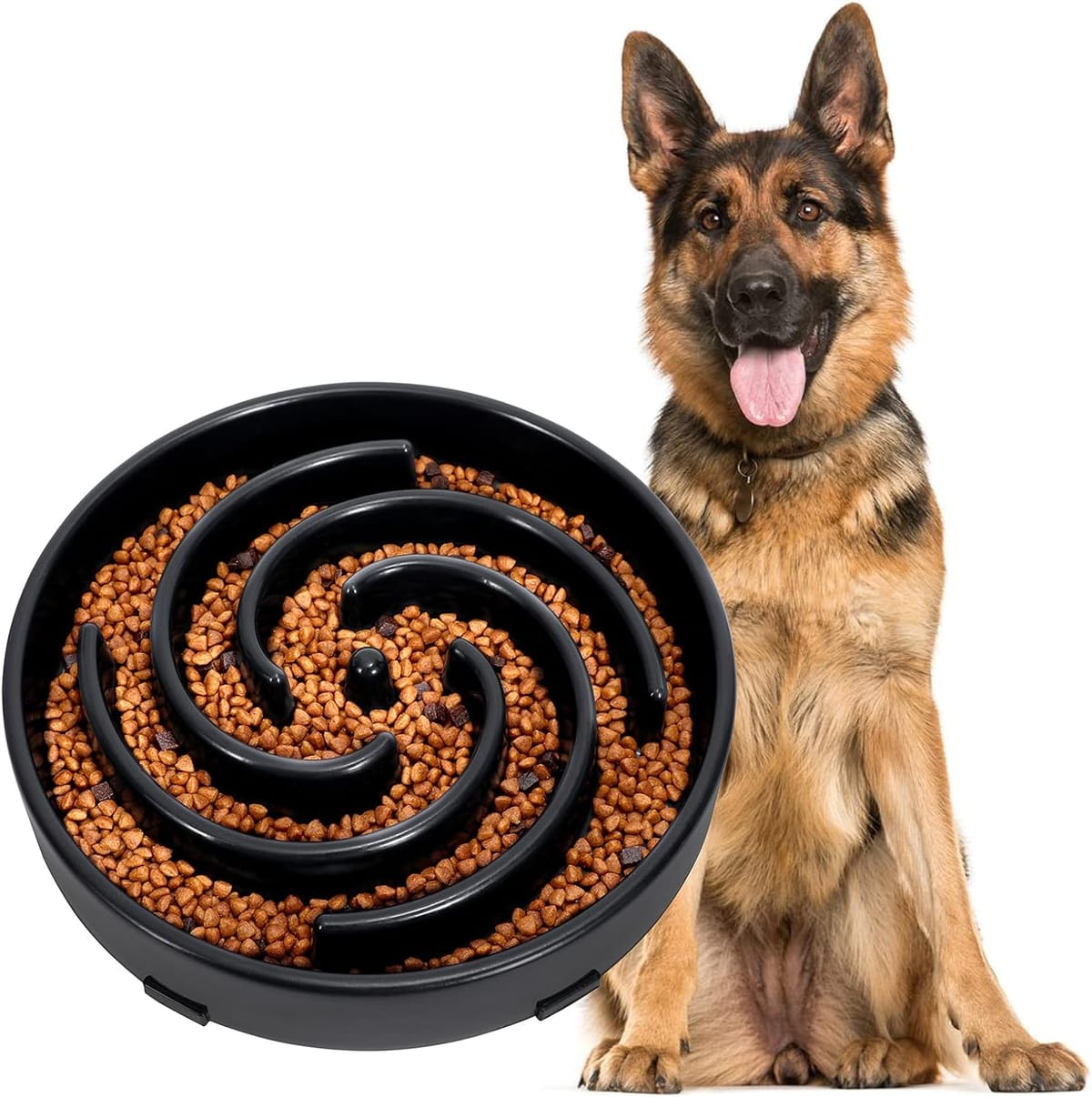Key Takeaways:
- Slow-feeder dog bowls can prevent health issues by making dogs eat slower, reducing the risk of bloat, and improving digestion.
- Choosing the right slow feeder depends on the dog's size, breed, and eating habits, with various options available to suit different needs.
The Rise of Slow Feeder Dog Bowls
In recent years, dog owners have become increasingly aware of the importance of their furry friends' eating habits. The introduction of slow feeder dog bowls has revolutionized the way many dogs consume their meals. But are slow feeders good for dogs? The answer lies in understanding the behavior of dogs eating and the potential risks associated with fast consumption.
Understanding the Need for Slow Feeders
Fast eating habits in dogs can lead to a variety of health issues, including choking, vomiting, and a life-threatening condition known as bloat, where the stomach fills with gas and twists, cutting off blood supply. Slow feeder dog bowls are designed to make dogs eat slower, mitigating these risks and promoting better digestion.
The Design and Functionality of Slow Feeders
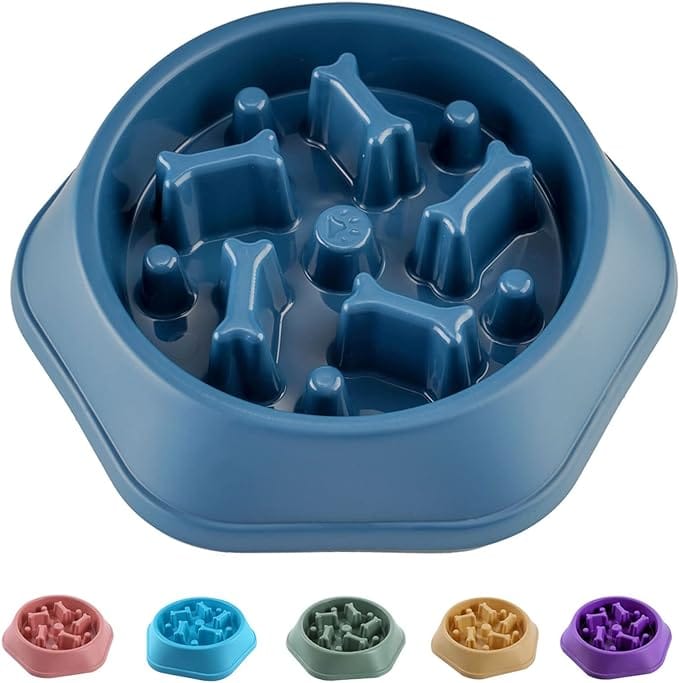
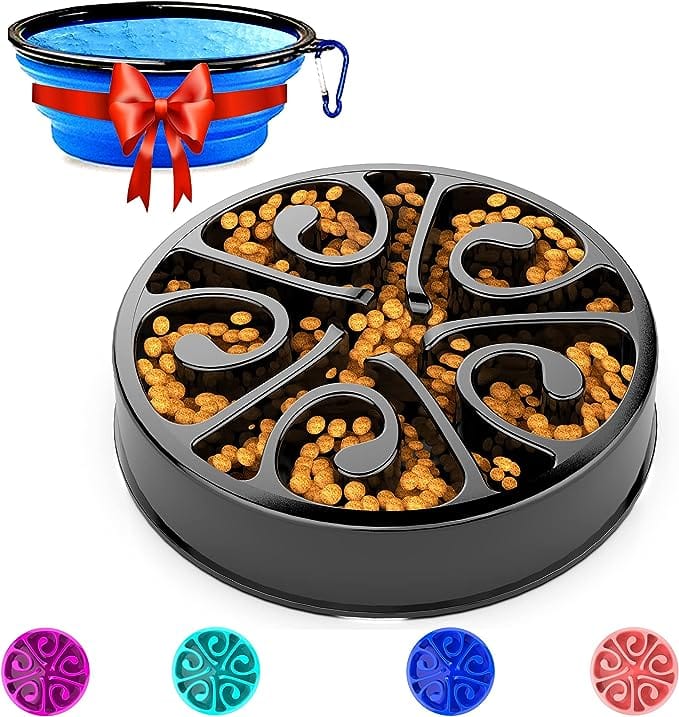
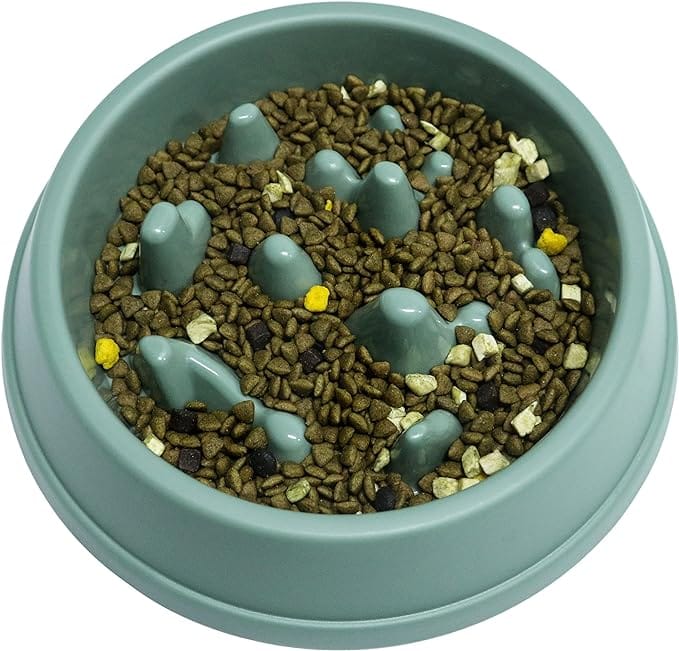
Dog slow feeder bowls come in various shapes and sizes, each with unique patterns and obstacles that encourage dogs to eat slower. From puzzle feeders to interactive feeders with varying levels of difficulty, these bowls turn the eating process into a challenging activity that provides valuable mental stimulation for your dog.
Choosing the Right Slow Feeder for Your Dog
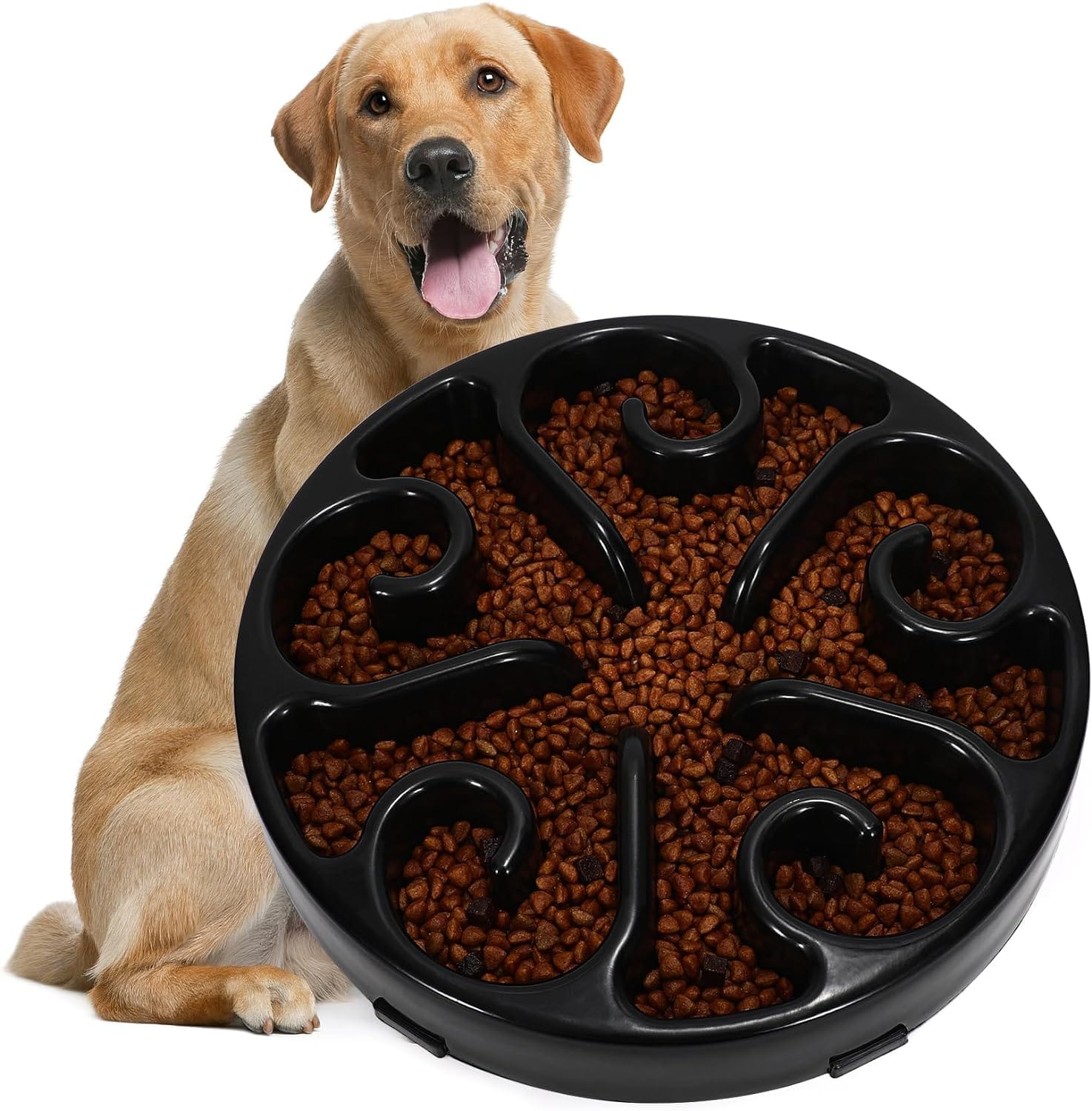
When selecting the best slow feeders, it's crucial to consider your dog's size and breed. Large dogs may need sturdier options like stainless steel bowls, while smaller dogs might benefit from plastic or silicone feeders. For flat-faced dogs, shallow designs are preferable to prevent discomfort and ensure they can access all the food.
The Benefits of Slower Food Consumption
By using a slow feeder, dog owners can help their pets develop healthier eating patterns. Eating slower allows for better chewing and digestion of food properly, reducing the risk of gastrointestinal discomfort. Additionally, it can prevent dogs from swallowing too much air, which often leads to dog farts and discomfort.
Slow Feeders and Weight Management
For food-motivated or high-energy dogs, slow feeders can be an effective tool for weight management. By controlling the pace of food consumption, these bowls help prevent overeating and can contribute to a healthier lifestyle for dogs prone to obesity.
The Social Aspect of Feeding Multiple Dogs
In households with multiple dogs, competition for food can lead to one dog trying to steal food from other dogs. Slow feeder dog bowls can help manage this behavior by ensuring each dog focuses on their own bowl, promoting peaceful meal times and reducing food aggression.
Slow Feeders for Rescue Dogs
Rescue dogs often come with a history of food insecurity, which can manifest in fast eating habits. Introducing a slow feeder can help these dogs learn that food is readily available, and there's no need to rush, providing a sense of security and comfort during meal times.
The Role of Slow Feeders in Preventing Bloat
Deep-chested breeds are particularly susceptible to bloat. By making dogs eat slower, slow feeders reduce the risk of this life-threatening condition. Dog owners can feel more at ease knowing that their pet's food bowl is helping to safeguard their health.
Mental Stimulation and Slow Feeders
Beyond the physical benefits, slow feeders offer valuable mental stimulation. Dogs are natural problem-solvers, and puzzle feeders can keep their minds engaged, turning mealtime into a fun and enriching experience.
The Versatility of Slow Feeders
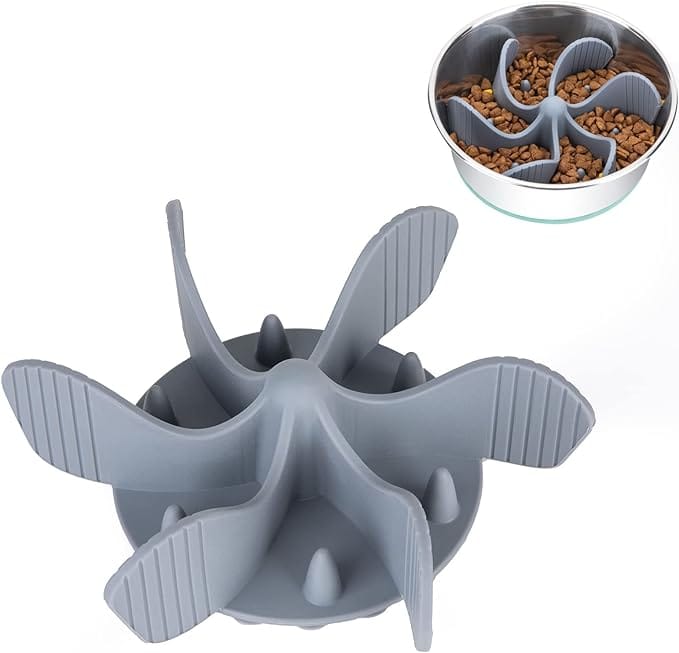
Slow feeder dog bowls are not just for dry food. Many designs are suitable for wet foods, and some can even be used with raw dog food diets. This versatility ensures that no matter what type of diet your dog follows, there's a slow feeder that can accommodate it.
The Compatibility of Slow Feeders with Wet Food Diets
When considering a slow feeder dog bowl for a pet on a wet food diet, owners often wonder about the practicality and effectiveness of such a combination. Slow feeders are typically associated with dry kibble, but many designs are equally suitable for wet food. The key is to select a dog slow feeder bowl with grooves and ridges that can accommodate the consistency of wet food without making it too challenging or frustrating for the dog to eat. This ensures that the benefits of slow feeding—reduced gulping and improved digestion—are extended to all types of diets.
Moreover, the best slow feeder for wet food should be made of a material that's easy to clean, such as a stainless steel bowl, to prevent bacterial growth. It's also important to consider the design; a puzzle feeder with compartments can turn mealtime into an engaging activity, encouraging dogs to work for their food. This not only slows down the eating process but also provides mental stimulation, making it an excellent choice for high-energy dogs or those that are particularly food-motivated.
Slow Feeders vs. Regular Bowls: A Comparative Analysis
When considering the switch from a dog's regular bowl to a slow feeder, it's essential to understand the differences and benefits. Regular bowls allow dogs to eat quickly, which can lead to a range of digestive issues, including choking, vomiting, and gastrointestinal discomfort. In contrast, slow feeders are designed to pace the rate at which a dog consumes their meals, promoting healthier eating habits and improved digestion.
The choice between a slow feeder and a dog's regular bowl often depends on the dog's size and eating behavior. For a high-energy dog that tends to eat like a vacuum cleaner, gobbling up food without chewing properly, a slow feeder can be a game-changer. It can prevent the dog from ingesting too much air, which is particularly beneficial for larger breeds prone to bloat. For smaller dogs or those with a more relaxed eating pace, a regular bowl might suffice, but the benefits of slow feeders in promoting mindful eating can apply to canines of all sizes.
Customizing Slow Feeders for High-Energyhigh-energy Dogs
High-energy dogs often exhibit voracious eating habits, which can be problematic for their health. A slow feeder tailored to a high-energy dog's size and eating style can significantly reduce the risks associated with fast eating. By incorporating obstacles and mazes, these feeders turn mealtime into a challenging activity that satisfies a dog's physical and mental energy, slowing down their eating pace and providing enrichment.
Moreover, the customization of slow feeders doesn't stop at the design. It's also about choosing the right size and complexity for your dog's size and intellect. A large, high-energy dog might need a sturdier and more complex feeder to withstand their enthusiasm and prevent them from flipping it over in excitement. On the other hand, a smaller high-energy dog may benefit from a feeder with smaller compartments that require more dexterity, keeping them engaged and eating at a healthier pace.
Slow Feeders Tailored for Brachycephalic Breeds
Flat-faced dogs, or brachycephalic breeds, often face unique challenges when eating from a traditional dog bowl. Their short snouts can make it difficult for them to pick up food, leading to frustration and an increased risk of a life-threatening condition such as aspiration pneumonia. A dog slow feeder bowl designed with shallow dips and easy-to-reach areas can make a significant difference for these breeds. By allowing flat-faced dogs to access their food without strain, these specialized slow feeders can help prevent the rapid ingestion of air and food, reducing the risk of digestive issues.
In addition to the design considerations, the size of the feeder is crucial. A dog's size, particularly the depth of their chest, should be taken into account. Deep-chested breeds are more prone to bloat, a serious condition where the stomach can twist and fill with gas. An interactive feeder or lick mat can slow down the rate at which a dog swallows food and air, which is particularly beneficial for these at-risk breeds. By catering to the anatomical needs of flat-faced and deep-chested dogs, slow feeders can contribute to safer and more enjoyable meal times.
Slow Feeders for Dogs with Special Needs
For dogs with health issues that require them to eat slower, such as those recovering from surgery or with dental problems, slow feeders can be a gentle way to regulate their food intake without causing additional stress or discomfort.
The Different Types of Slow Feeders
From lick mats that encourage licking to bowls with raised sections that act as obstacles, there's a wide range of slow feeders to choose from. Some even come with a suction cup to secure them to the floor, preventing spillage and mess.
The Convenience Factor
Most slow feeder dog bowls are dishwasher safe, making cleanup a breeze for dog owners. This convenience factor is essential for maintaining hygiene and ensuring that your dog's regular bowl is always clean and ready for use.
The Only Downside of Slow Feeders
While the benefits are numerous, the only downside to using a slow feeder might be the initial adjustment period. Some dogs may become frustrated or confused when first introduced to a slow feeder. However, with patience and positive reinforcement, most dogs quickly adapt and enjoy the challenge.
The Interactive Nature of Slow Feeders
Interactive feeders not only slow down the eating process but also provide an opportunity for dog owners to bond with their pets. Engaging with your dog during mealtime can strengthen your relationship and enhance the overall feeding experience.
Slow Feeders for Small and Big Dogs
Whether you have big dogs or small dogs, there's a slow feeder designed to suit their needs. For large dog breeds, robust and heavy-duty feeders are ideal, while smaller dogs may benefit from feeders with less complex patterns and smaller compartments.
The Tennis Ball Trick
For dog owners not ready to invest in a specialized bowl, a simple tennis ball placed in the dog's regular bowl can serve as a makeshift slow feeder. This DIY solution can help make dogs eat slower until a more permanent solution is found.
The Impact of Slow Feeders on Food Aggression
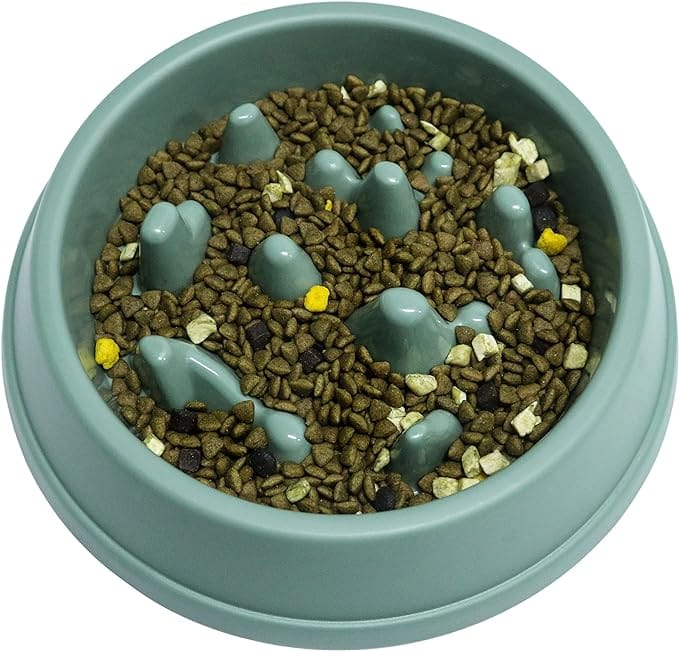
Food aggression is a common issue among dogs, especially in households with more than one dog. Slow feeders can help mitigate this behavior by keeping each dog focused on their meal, reducing the likelihood of aggressive encounters over food.
Slow Feeders as a Preventative Measure
Using a slow feeder can act as a preventative measure against potential health issues related to fast eating. By incorporating a slow feeder into your dog's routine early on, you can promote healthier eating habits that can have long-lasting benefits.
The Popularity of Slow Feeders Among Dog Owners
As awareness of the benefits of slow feeders spreads, more dog owners are choosing to incorporate them into their dogs' routines. The popularity of these bowls is a testament to their effectiveness in improving the health and well-being of many dogs.
The Future of Slow Feeders
As the demand for slow feeders grows, manufacturers continue to innovate, creating new designs and features that cater to the diverse needs of dogs and their owners. The future of slow feeders looks promising, with advancements that will continue to enhance the feeding experience for dogs.
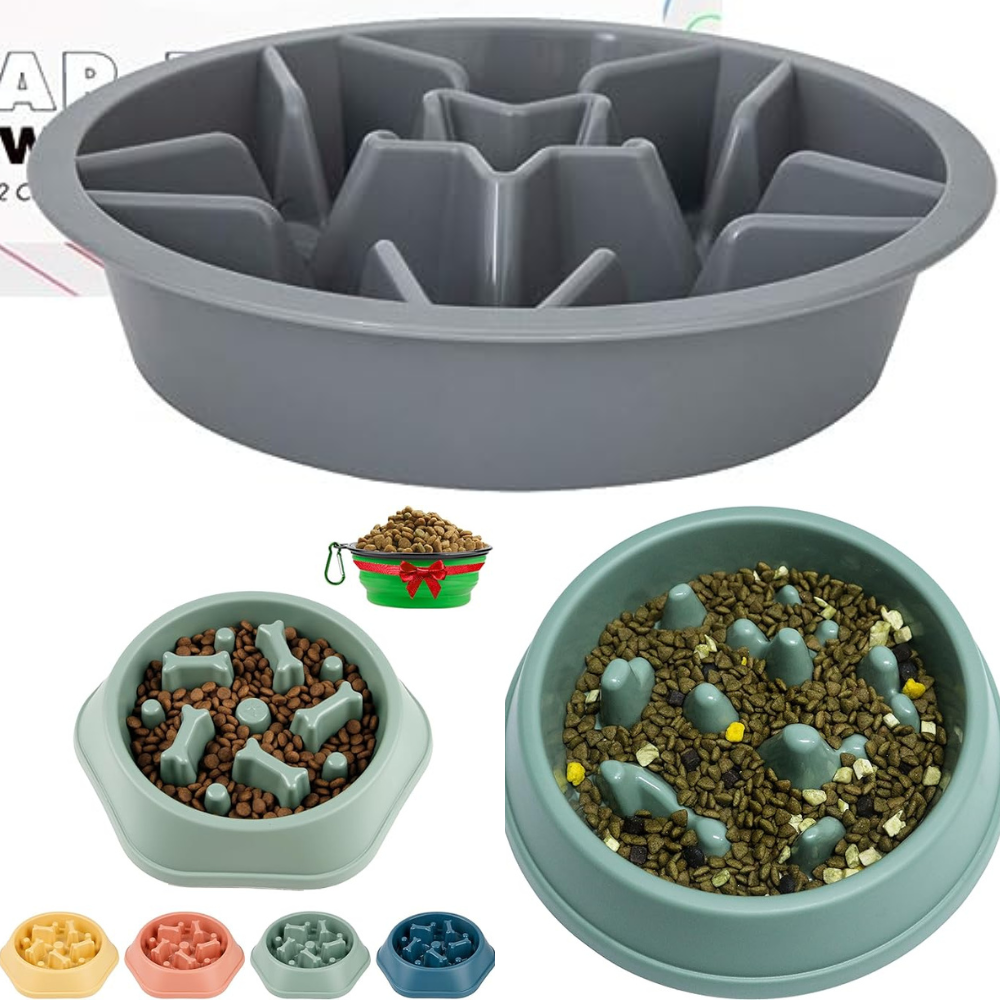

Can slow feeders be used with any type of dog food?
Yes, slow feeders are versatile and can be used with dry food, wet foods, and even raw dog food diets. It's important to choose a feeder that's appropriate for the type of food your dog eats.
Are slow feeders suitable for flat-faced dogs?
Absolutely. There are slow feeders designed with shallow patterns specifically for flat-faced dogs to ensure they can access the food without discomfort.
How do I introduce my dog to a slow feeder?
Start by placing a small amount of food in the slow feeder and encourage your dog to explore it. Use positive reinforcement to reward your dog for interacting with the feeder. Patience is key, as some dogs may take longer to adjust to the new feeding method.
Should dogs use slow feeders?
Slow feeders are a fantastic innovation for our furry friends, especially for those who gobble down their meals too quickly. The design of these feeders encourages dogs to eat at a more leisurely pace, which can prevent a host of health issues such as choking, bloating, and obesity.
By making mealtime a challenge, slow feeders can also provide mental stimulation as dogs work to get their food.
Do dogs get frustrated with slow feeders?
While slow feeders are beneficial, some dogs might initially feel frustrated with the change in their eating routine. This is particularly true for dogs who are used to eating quickly.
However, with patience and proper introduction, most dogs can adapt to slow feeders. It's important to choose a slow feeder appropriate for your dog's size and feeding habits to minimize frustration.
Do slow feeders tire out dogs?
Slow feeders can indeed tire out dogs but in a good way! They turn mealtime into a stimulating puzzle, making dogs work a bit harder for their food. This can be a form of mental exercise that can help tire out a dog, especially if they are high-energy or easily bored. It's a constructive way to expend energy and can contribute to overall better behavior.
Is slow eating better for dogs?
Slow eating is better for dogs. Eating slowly helps improve digestion and nutrient absorption, and reduces the risk of choking and vomiting. It also decreases the likelihood of serious conditions like gastric torsion, commonly known as bloat, which can be life-threatening. Slow eating encourages a healthier lifestyle and can contribute to weight management.
Do vets recommend slow feeder bowls?
Many experienced veterinarians highly recommend the use of slow feeder bowls, especially for dogs that tend to eat too quickly or are prone to digestive issues. These specially designed bowls serve as a practical and effective preventative measure, helping to avoid potential health complications associated with rapid ingestion.
Incorporating slow feeder bowls into a dog's feeding routine is often suggested by vets as part of a holistic and comprehensive approach towards promoting optimal health and overall well-being for our beloved furry friends.
What is the best feeding practice for dogs?
The best feeding practices for dogs include providing a balanced diet, maintaining a consistent feeding schedule, and controlling portions to prevent overeating. Integrating slow feeders can be part of this practice, ensuring that dogs eat slowly and chew their food properly.
Fresh water should always be available, and treats should be given in moderation as part of a dog's overall calorie intake.
How do I mentally stimulate my dog?
Mentally stimulating your dog can be achieved through various activities that engage their mind. Puzzle toys and slow feeders are excellent for meal times. Training sessions, new tricks, and obedience work also provide mental exercise.
Interactive play with toys that require problem-solving, such as hide-and-seek games or toys with hidden treats, can keep a dog's mind sharp. Regular socialization with other dogs and new environments can also contribute to mental stimulation.

Slow-feeder dog bowls have emerged as a beneficial tool for dog owners looking to improve their pets' eating habits. By encouraging dogs to eat slower, these feeders can prevent health issues like bloat, improve digestion, and provide valuable mental stimulation. With a variety of designs available, there's a slow feeder suitable for every dog, regardless of size, breed, or dietary needs. While the transition to a slow feeder may require some adjustment, the long-term benefits for your furry friend's health and happiness are well worth the effort.
